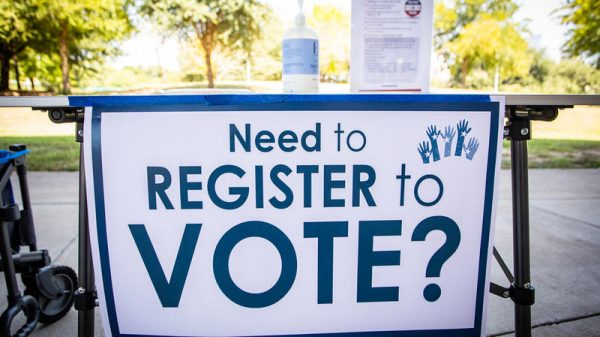
Streptococcus cultured in a media – Rodolfo Parulan Jr. / Getty Images
In certain areas of the nation, the prevalence of strep throat among youngsters is on the rise, prompting worries that the lack of medicines needed to treat it might get worse as the country enters winter.
According to Dr. Jennifer Stevenson, director of the emergency department at Henry Ford Medical Center—Fairlane in Dearborn, Michigan, an unusual number of apparently healthy adults and children are being admitted to the emergency room with strep throat.
“I’ve been practicing emergency medicine for 25 years, and I have not seen strep throat as frequently as I have in these past six or eight months,” Stevenson stated.
Since March, chest discomfort has been the most frequent diagnosis at Stevenson’s emergency room, followed by strep. Numerous individuals got COVID as well.
In certain areas of the mid-Atlantic and the Southeast, the bacterial infection has been on the rise for months and is characterized by painful, scratchy throats and high fevers.
Dr. Thomas Lacy, the division leader for Nemours Children’s Primary Care, stated that we are “absolutely seeing a significant increase in strep” that started during the summer. The Nemours system includes pediatric clinics and children’s hospitals in Pennsylvania, Florida, and Delaware.
Your throat may feel rough and scratchy if you have strep throat, a bacterial infection. Only a small percentage of sore throats are caused by streptococcus.
Strep throat can lead to problems, including kidney irritation or rheumatic fever, if left untreated. A specific kind of rash, heart valve damage, and painful, inflamed joints can all be symptoms of rheumatic fever.
Children are most frequently affected by strep throat, although it may happen to anybody. Consult your doctor right away for testing and treatment if you or your kid exhibit any strep throat symptoms.
Why is strep throat worsening?
Over the past ten years, more cases of invasive strep A, a related type of bacteria that also causes scarlet fever and impetigo, have been identified; nevertheless, according to Stevenson and Lacy, the common form of the sickness is now harming children in hospitals.
Although the COVID pandemic did interrupt the regular rhythm of seasonal infections like RSV and the flu, it is unknown why strep is making a significant comeback this year.
Since the start of the school year this autumn, compared to the previous year, strep throat cases have increased between 300% and 400%, according to Lacy’s teams in Delaware and Pennsylvania. At the same time last year, there were more than twice as many strep cases in Florida.
Lacy observed, “Strep is really zooming back.”
Since the beginning of August, strep throat cases, particularly in children between the ages of 4 and 12, have steadily increased, according to Epic Research, which monitors electronic health information statewide. This covers diagnoses made at pediatricians’ offices, emergency rooms, and urgent care centers.
Thankfully, the strep epidemic is not widespread. Hospitals in Cleveland, Pittsburgh, San Diego, and Seattle, among other major medical facilities in the nation, that NBC News spoke with, are not observing appreciable increases.
Although the Centers for Disease Control and Prevention estimate that 5 million outpatient visits each year are caused by noninvasive group A strep, doctors are typically not required to report strep throat diagnoses to their local or state health departments, as they would be for other illnesses like COVID or measles.
According to the Epic data, strep throat levels currently seem to be returning to pre-pandemic levels after an extremely high surge in strep last year.
Dr. Victoria Valencia, the temporary director of Tulane University’s Health Center for Student Care in New Orleans, describes how she feels in that way. This autumn, Valencia claimed that her team saw an increase in strep infections on campus shortly after the semester got underway.
“Anecdotally, we’re seeing similar numbers to what we saw in 2019 before the pandemic,” Valencia stated. “I don’t feel inundated.”
Symptoms of Strep Throat
Stevenson and Valencia claim that the majority of kids who test positive for strep throat have:
- Throat pain.
- Extreme tiredness.
- A high-grade fever that might reach 103 degrees Fahrenheit.
Children age 12 and younger may have:
- Ache in the abdomen.
- Nausea.
- Vomiting.
- Small children may have discomfort from swollen lymph nodes in the intestines caused by a strep infection.
- Tonsils can swell to the point that they cause children to gag.
Amoxicillin, a commonly used antibiotic, is a simple treatment for strep throat, according to Stevenson. “Usually, within about 24 hours of starting that antibiotic, the patient’s going to feel a whole lot better,” she explained.
Furthermore, after the antibiotic is administered, youngsters become significantly less infectious. Kids who have strep can spread the infection to others for weeks if they are not treated, typically through respiratory droplets.
However, the Food and Drug Administration reports that the medicine, particularly the type given to small infants, has been in low supply for a year.
“This is an extremely challenging scenario,” said Lacy. “Spot shortages are forcing us to turn to different antibiotics, sometimes antibiotics that we would not have used” in the first place.
Although the majority of the pharmacies in Stevenson’s region of Michigan have been able to supply the prescription, “I expect that as we get into these cooler months, we’re going to see more infections, and parents will have a difficult time finding this medication for their kids.”




![Tyson Foods Plant [Photo: Food Manufacturing]](https://southarkansassun.com/wp-content/uploads/2023/08/iStock_1185520857__1_.5e441daa51cca-600x337.jpg)








![Silverado Senior Living Management Inc. [Photo: Los Angeles Times]](https://southarkansassun.com/wp-content/uploads/2023/10/download-6-4-600x337.jpg)

![China's Wuhan Institute of Virology [Photo: Nature]](https://southarkansassun.com/wp-content/uploads/2023/09/d41586-021-01529-3_19239608-600x337.jpg)














